The AMD Radeon RX 5600 XT Review, Feat. Sapphire Pulse: A New Challenger For Mainstream Gaming
by Ryan Smith on January 21, 2020 9:01 AM ESTSynthetics
Moving on, we have our synthetic performance testing, taking a look at geometry throughput, pixel throughput, memory compression, and more.
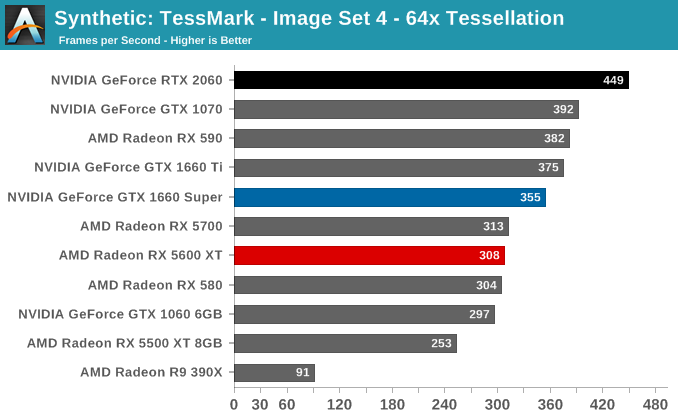
Given the significance of cutting a quarter of Navi 10’s GDDR6 memory bus, I was very curious to see what that would do for synthetic performance. But for better or worse, this has created more questions than it has solved.
The numbers listed below are accurate, in as much as these are the results I get when testing these cards. Whether they are correct, however, is another matter.
The problem, in short, is that due to AMD’s very aggressive power savings/idling implementation for their Navi 10 cards, I have been unable to get these cards to run at their full memory clockspeeds when executing the the Beyond3D Suite benchmark suite. The GPU clocks regularly pass 1600MHz like they should, however AMD’s telemetry is reporting that memory clocks are rarely hitting 7Gbps, let alone 12Gbps+. As a result, we end up with results like the pixel test below, where the RX 5600 XT is beating the RX 5700, an otherwise impossible outcome.
As best as I can tell, this issue has been going on since the launch of the Radeon RX 5700 series back in July, but it’s only now that I’ve noticed it, in large part due to the RX 5600 XT cards being slightly less aggressive in their idling. In other words, those cards are boosting to higher memory clockspeeds more often, putting them ahead of the RX 5700 and bringing the clocking issue front and center.
I’m still working on a proper fix for the issue, but for now the results with Navi 10 cards should be taken with a large grain of salt. The benchmark itself is still fine, but AMD’s aggressive power management (and lack of an easy means to disable it) is kneecapping AMD’s performance in these benchmarks.
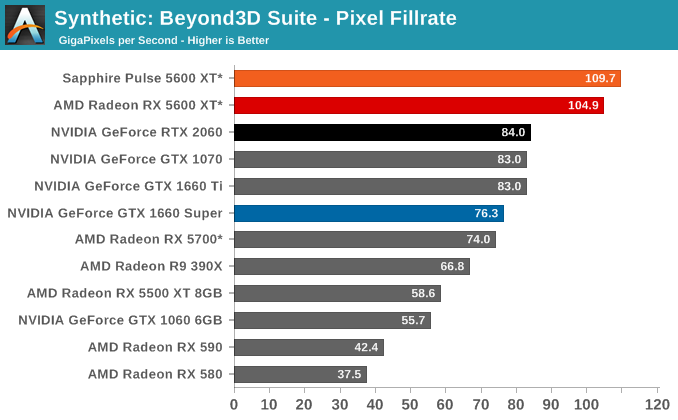

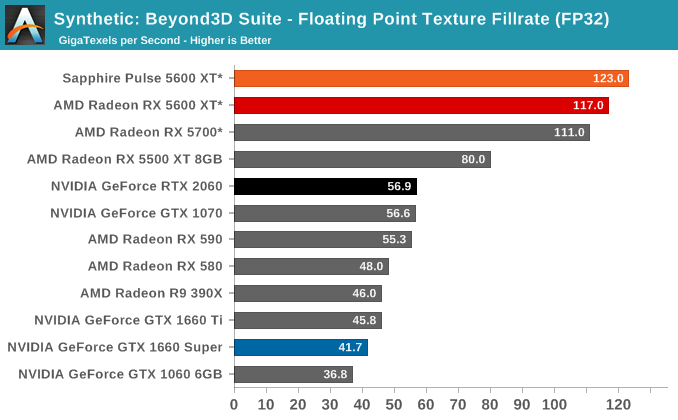
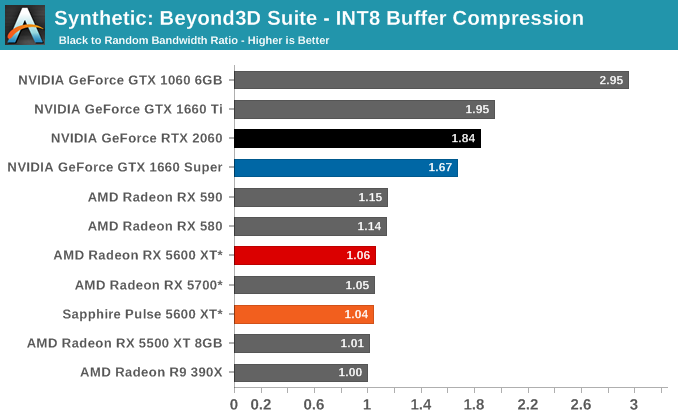
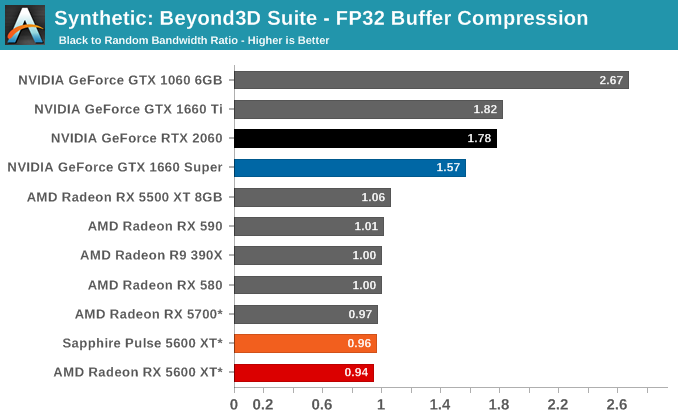










202 Comments
View All Comments
SilthDraeth - Tuesday, January 21, 2020 - link
Er... 2nd sentence. Anyway.koekkoe - Tuesday, January 21, 2020 - link
25 percent fan speed - How many RPM this is?Ryan Smith - Tuesday, January 21, 2020 - link
~750 RPM.kobblestown - Tuesday, January 21, 2020 - link
Thanks for including an R9 390X. I actually have one of those.maroon1 - Tuesday, January 21, 2020 - link
So equal price per dollar to RTX 2060But why would I buy 5600XT when the price difference too small, and I get slightly faster card with more features like DLSS, ray tracing and VRS ??
RTX 2060 is clearly better card to buy out of the two
maroon1 - Tuesday, January 21, 2020 - link
*Performance per dollar I meanKorguz - Tuesday, January 21, 2020 - link
really depends on your usage... for ray tracing, meh.. at the entry level, the 2060 is almost useless for RT, unless something has changed in the last few months, to big of a hit to use it. but looking at the prices for the 5600xt, 2060 and 2060S, at least with Asus' cards, there is $40 cdn difference between the entry card for these 3, and at the top end for these 3 cards there is an almost $200 cdn price difference, and yes, the 2060S is the most expensive at $650. for me, i would go with the 5600xt, only because i dont play, and dont plan on playing any games that use RT, so that is a feature i could care less about right now. it really boils down to what a person would do with the video card they were to get....Irata - Tuesday, January 21, 2020 - link
If it's better for you, go get it.That said, the 5600XT is still cheaper, if only by a few $, but you get only slightly lower fps (depends on the game engine really, some are quite a bit faster on the 2060, others quite a bit faster on the 5600 XT).
On the plus side, you get lower noise, lower power consumption and it's not that Navi does not have any other features.
Afaik, the one that really makes a difference in the 2060's favor is Ray Tracing, which only gives playable fps at lower resolutions on that particular card.
So really, it comes down to preference. If you can get a 2060 Founder's edition for $299 including shipping then hey, not a bad buy.
If you get a Sapphire or similar OC RX 5600XT for $289 - hey, also not a bad buy.
eva02langley - Tuesday, January 21, 2020 - link
Honestly, DLSS and RTX are not even a matter. It is in what...? 5 games? Also, a 2060 RTX is definitely not enought for Ray Tracing unless playing at 720p 60Hz is your thing.Cooe - Tuesday, January 21, 2020 - link
Lol, the 2060 is absolutely useless for ray-tracing, so if that's the reason anyone is buying one, you are absolutely doing it wrong. And DLSS is literally a game dehancer, not enhancer.